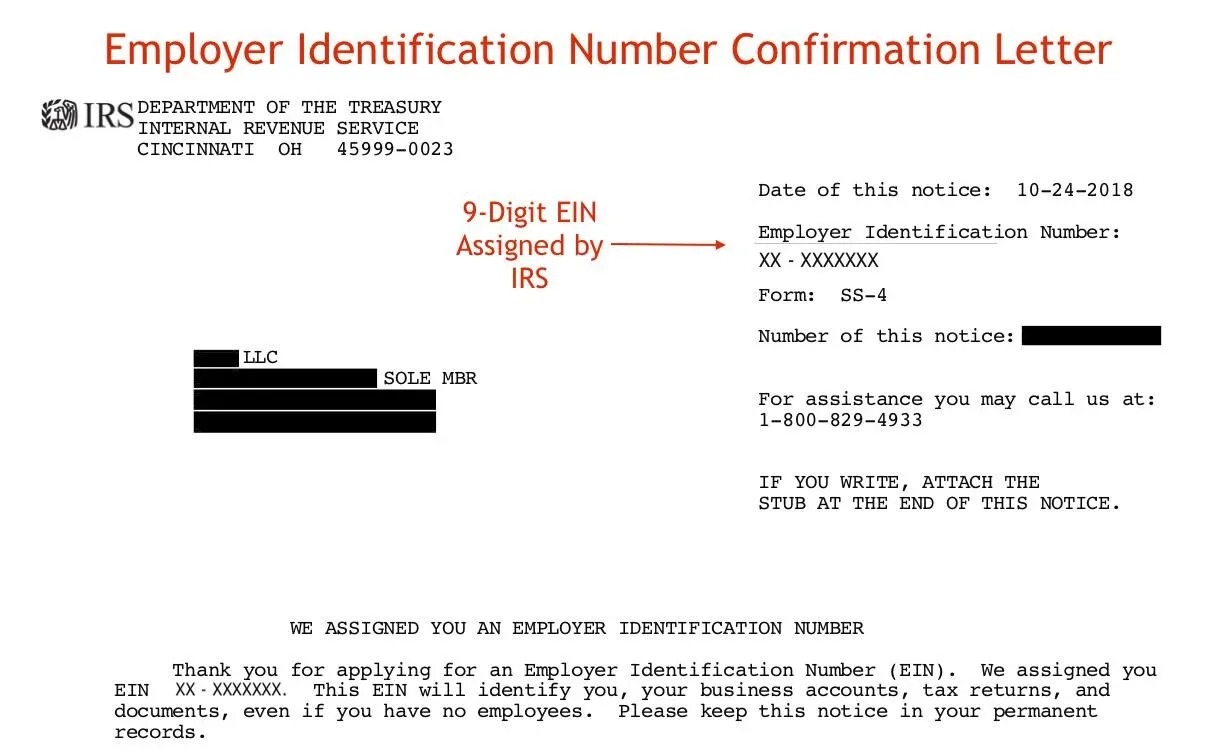

Finance
What Is Inforce Life Insurance?
Published: October 16, 2023
Learn about Inforce Life Insurance and how it can help secure your financial future. Explore the benefits of this type of insurance and make informed financial decisions.
(Many of the links in this article redirect to a specific reviewed product. Your purchase of these products through affiliate links helps to generate commission for LiveWell, at no extra cost. Learn more)
Table of Contents
Introduction
Life insurance is a vital component of any comprehensive financial plan. It provides financial security and peace of mind for individuals and their loved ones in the event of their death. While most people are familiar with traditional life insurance policies, such as term life or whole life insurance, there is another type of coverage known as inforce life insurance.
Inforce life insurance refers to an existing life insurance policy that is still active and in effect. It is the opposite of a lapsed or surrendered policy. Inforce life insurance provides policyholders with ongoing coverage and the ability to claim benefits as specified in the policy terms.
When you purchase a life insurance policy, you enter into a contract with the insurance company. As long as you continue to pay the premiums, the policy remains inforce, and you can count on the coverage it provides. Inforce life insurance can provide financial protection for your loved ones, help cover final expenses, pay off debts, or even serve as an inheritance.
Understanding inforce life insurance is crucial because it allows policyholders to make informed decisions about their coverage and take advantage of the benefits it offers. In this article, we will explore what inforce life insurance is, how it works, its benefits and drawbacks, common uses, and factors to consider if you are thinking about purchasing this type of coverage.
Definition of Inforce Life Insurance
Inforce life insurance refers to a life insurance policy that is still active and in effect. It is the opposite of a lapsed or surrendered policy. When a life insurance policy is inforce, it means that the policyholder continues to pay the required premiums, and the insurance company agrees to honor the policy terms and conditions.
Inforce life insurance offers ongoing coverage and ensures that the policyholder’s beneficiaries will receive the death benefit if the insured person passes away. It is important to note that inforce life insurance can refer to various types of policies, including term life, whole life, universal life, and variable life insurance.
When a policy is considered inforce, it means that the premiums agreed upon at the time of purchase are being paid on schedule. Failure to pay premiums can result in the policy lapsing or being surrendered, which means that the coverage is terminated, and the policyholder will no longer be eligible to claim any benefits.
Inforce life insurance is regulated by state laws and insurance regulations. These laws provide guidelines for the premiums, policy terms, and conditions that must be followed to maintain an inforce policy. It is important for policyholders to review their policy documents and understand the requirements to ensure that their coverage remains inforce.
As long as the policy premiums are paid, inforce life insurance provides financial security and peace of mind for the policyholder and their beneficiaries. The policy remains inforce until the insured person passes away or until the policy maturity date is reached, depending on the type of policy.
Now that we understand the definition of inforce life insurance, let’s delve into how it works and the benefits it offers.
How Inforce Life Insurance Works
Inforce life insurance works by providing ongoing coverage to the policyholder as long as the required premiums are paid on time. When a life insurance policy is inforce, the insurance company is legally obligated to honor the terms of the policy, including paying out the death benefit to the beneficiaries upon the insured’s passing.
Here are the key components of how inforce life insurance works:
Premium Payments
To keep a life insurance policy inforce, the policyholder must continue to pay the premiums as specified in the policy contract. These premium payments can be made monthly, quarterly, annually, or as otherwise agreed upon. Failure to make timely premium payments can result in the policy lapsing or being surrendered.
Death Benefit
The death benefit is the amount of money that will be paid out to the policy’s beneficiaries upon the insured’s death. Inforce life insurance guarantees that if the insured person passes away while the policy is active, the beneficiaries named in the policy will receive the death benefit.
Policy Terms and Conditions
The policyholder must adhere to the terms and conditions outlined in the policy contract. These terms may include restrictions on activities that could increase the risk of death, such as extreme sports or dangerous occupations. It is essential to review the policy documents carefully and understand the obligations and limitations associated with the policy.
Policy Riders
Policyholders may have the option to add additional features or benefits to their life insurance policy through what is called a policy rider. Riders can provide extra coverage for specific scenarios, such as critical illness or disability. These riders may come at an additional cost and can be added or removed during the life of the policy, as long as the policy remains inforce.
Updating the Policy
Life circumstances may change over time, and it is important to review and update the policy as necessary. This could include changes in marital status, the birth of a child, or a change in financial situation. By keeping the policy up to date, the policyholder ensures that the coverage aligns with their evolving needs.
Understanding how inforce life insurance works is crucial for policyholders to ensure that their coverage remains active and their loved ones will be protected in the event of their passing. Now that we have explored how inforce life insurance works, let’s move on to the benefits it offers.
Benefits of Inforce Life Insurance
Inforce life insurance offers numerous benefits for policyholders and their beneficiaries. Here are some key advantages:
Financial Protection
Perhaps the most significant benefit of inforce life insurance is the financial protection it provides. In the event of the insured’s death, the policy will pay out a death benefit to the beneficiaries. This lump sum payment can help cover funeral expenses, outstanding debts, mortgage payments, and daily living expenses. It offers peace of mind knowing that loved ones will be taken care of financially.
Estate Planning
Inforce life insurance can play an essential role in estate planning. It can help ensure that there are sufficient funds available to cover estate taxes and other final expenses. By designating beneficiaries, policyholders can also efficiently transfer assets to their loved ones, bypassing probate and potentially reducing tax liabilities.
Cash Value Accumulation
Permanent life insurance policies, such as whole life or universal life, often include a cash value component. This means that a portion of the premiums paid accumulates in a cash value account within the policy. The cash value grows tax-deferred and can be accessed during the insured’s lifetime. It can serve as emergency funds, a source of retirement income, or a means to pay future premiums.
Ability to Access Funds
In some cases, policyholders may have the option to borrow against the cash value of their inforce life insurance policy. This can provide a source of liquidity in times of need, such as for educational expenses, medical bills, or home renovations. Keep in mind that borrowing against the policy reduces the death benefit and may incur interest charges.
Flexibility and Customization
Inforce life insurance policies offer flexibility and customization options to meet the unique needs of policyholders. They can often be tailored with various riders to provide additional coverage, such as critical illness or disability benefits. Policyholders can also adjust the coverage amount or change beneficiaries as circumstances evolve.
Tax Advantages
Inforce life insurance policies can offer tax advantages. The death benefit is typically paid out to beneficiaries income tax-free. Additionally, the cash value accumulation within a permanent life insurance policy grows tax-deferred, meaning that policyholders do not pay taxes on the interest or investment gains until they withdraw the funds.
The benefits of inforce life insurance make it an essential component of a comprehensive financial plan. Whether it’s providing financial security for loved ones, enhancing estate planning strategies, or offering tax advantages, inforce life insurance can provide valuable protection and peace of mind for policyholders. Now, let’s explore some of the potential drawbacks of inforce life insurance.
Drawbacks of Inforce Life Insurance
While inforce life insurance offers many benefits, it’s important to consider the potential drawbacks before making a decision. Here are some of the key drawbacks to be aware of:
Cost
One of the main drawbacks of inforce life insurance is the cost. Premiums for life insurance policies can be high, especially for larger coverage amounts or permanent policies. For some individuals, the cost of maintaining an inforce policy may become burdensome, particularly if their financial situation changes. It’s important to carefully evaluate your budget and ensure that you can afford the premiums in the long run.
Limited Flexibility
While inforce life insurance policies offer some flexibility options, such as adjusting coverage amounts or changing beneficiaries, they still have limitations. Significant changes may require additional underwriting, which can be time-consuming and could result in increased premiums or policy modifications. Additionally, once a policy is inforce, it may be challenging to switch to a different type of coverage or insurance provider without undergoing the application process again.
No Guaranteed Return
Although some permanent life insurance policies accumulate cash value over time, the growth is not guaranteed. The policy’s cash value is subject to the performance of the insurance company’s investments and policy expenses. As a result, the returns may not meet expectations, and policyholders could face a situation where the cash value does not grow as anticipated or may even decrease in value.
Opportunity Cost
One potential drawback of maintaining an inforce life insurance policy is the opportunity cost. The premium payments made towards the policy could be used for other financial goals, such as investing in other investment vehicles or saving for retirement. Individuals should evaluate whether the potential returns from the policy outweigh the potential returns from alternative investment opportunities.
Policy Dependence
Inforce life insurance policies require ongoing premium payments to keep the coverage active. If a policyholder is unable to continue paying the premiums, the policy may lapse, and the coverage will be lost. This dependence on premium payments can create financial strain, especially during difficult times or if the policyholder’s financial situation changes.
While inforce life insurance offers important benefits, it’s crucial to weigh these drawbacks against your financial goals and circumstances. It’s recommended to consult with a financial advisor to help you assess whether inforce life insurance aligns with your long-term financial plans. Next, let’s explore some common uses of inforce life insurance.
Common Uses of Inforce Life Insurance
Inforce life insurance policies serve various purposes and can be utilized in different ways to meet the needs of policyholders. Here are some common uses of inforce life insurance:
Financial Protection for Loved Ones
One of the most common uses of inforce life insurance is to provide financial protection for loved ones. The death benefit can help cover funeral expenses, pay off outstanding debts, replace lost income, or serve as an inheritance. It ensures that your beneficiaries are financially supported and can maintain their standard of living in the event of your passing.
Estate Planning
Inforce life insurance can play a crucial role in estate planning. It can help ensure that there are sufficient funds available to cover estate taxes, administrative costs, and other final expenses. By designating beneficiaries, you can efficiently transfer wealth to the next generation, bypassing probate and potential delays in distributing assets.
Business Continuation
Inforce life insurance is often used in business continuation planning, especially for small businesses and partnerships. It can provide financial support to help the surviving business partners buy out the deceased partner’s share, ensuring the smooth continuity of the business without burdening the surviving partners with large financial obligations.
Charitable Giving
Inforce life insurance can also be utilized for charitable giving. By naming a charitable organization as the policy’s beneficiary, you can make a significant impact and leave a lasting legacy. Depending on the policy’s value, you may be able to make a more substantial charitable contribution than you would through traditional giving methods.
Supplemental Retirement Income
For individuals with permanent life insurance policies, the accumulated cash value can be accessed during their lifetime. This cash value can be used as a supplemental source of retirement income. Policyholders can take loans or withdrawals from the policy’s cash value, providing them with a tax-advantaged source of funds to supplement their retirement savings.
Key Person Insurance
In a business setting, a key person is someone whose expertise, knowledge, or leadership is crucial to the success of the organization. Inforce life insurance can be used to financially protect the business in the event of the key person’s untimely death. The death benefit can help cover the costs of hiring and training a replacement, settling outstanding debts, or mitigating any financial hardships caused by the loss of the key individual.
These are just a few examples of the common uses of inforce life insurance. The versatility and benefits of inforce life insurance make it a valuable tool for protecting loved ones, planning for the future, and securing your financial legacy. Now, let’s explore some factors to consider before purchasing inforce life insurance.
Factors to Consider before Purchasing Inforce Life Insurance
Before purchasing inforce life insurance, it’s essential to carefully evaluate several factors to ensure that you make the right decision for your financial needs. Here are some key factors to consider:
Financial Goals and Needs
First and foremost, assess your financial goals and needs. Consider why you are purchasing life insurance and what you hope to achieve with it. Are you looking to provide financial protection for your loved ones, build cash value for future needs, or use it for estate planning purposes? Understanding your financial goals will help you determine the type and amount of coverage that is appropriate for your situation.
Affordability
Life insurance premiums can vary significantly depending on factors such as age, health, and the type of policy. It’s crucial to assess the affordability of the premiums and ensure that you can comfortably make the payments over the long term. Consider how the premiums fit into your overall budget and evaluate if there are any potential financial strains that may arise due to premium payments.
Policy Type
There are several types of life insurance policies available, each with its characteristics. Evaluate the different policy types, such as term life insurance or permanent life insurance (whole life, universal life, etc.). Consider the pros and cons of each type and determine which one aligns best with your needs and financial goals.
Coverage Amount
The coverage amount, also known as the death benefit, is a crucial decision when purchasing life insurance. Assess your financial obligations, such as outstanding debts, mortgage payments, and future financial needs, to determine an appropriate coverage amount. It’s important to strike a balance between providing adequate financial protection for your loved ones and ensuring that the coverage is affordable for you.
Health Status
Life insurance premiums are often based on the applicant’s health status. Before purchasing inforce life insurance, consider your current health condition and any pre-existing medical conditions. Some policies may require a medical examination or underwriting process, which could impact the premium rates. Be aware that certain health conditions may result in higher premiums or limited coverage options.
Premium Guarantee Period
If you are considering a permanent life insurance policy, check whether the premiums are guaranteed to remain the same for a specific period. Some policies have level premiums for the entire duration, while others may have a limited premium guarantee period. Understanding the premium structure will help you anticipate future premium adjustments and plan your finances accordingly.
Company Reputation
When purchasing inforce life insurance, it’s important to research and evaluate the reputation and financial stability of the insurance company. Look for a company with a strong track record, high ratings from independent rating agencies, and a solid claims-paying history. A reputable company will provide you with confidence that your policy will be honored and your claims will be handled efficiently.
These factors are crucial to consider before purchasing inforce life insurance. It is recommended to consult with a qualified insurance advisor or financial professional to evaluate your specific needs and guide you through the decision-making process. Now, let’s wrap up our discussion.
Conclusion
Inforce life insurance is a valuable financial tool that provides ongoing coverage and financial security for policyholders and their loved ones. It ensures that if the insured person passes away while the policy is active, the beneficiaries will receive the death benefit, which can help cover expenses, settle debts, and provide for the future.
Throughout this article, we have explored the definition and workings of inforce life insurance, as well as its benefits and drawbacks. Inforce life insurance offers financial protection, assists with estate planning, and provides tax advantages. It can be customized to meet individual needs and utilized in various scenarios, such as business continuation or charitable giving.
However, it’s important to consider factors such as affordability, financial goals, policy type, coverage amount, health status, and the reputation of the insurance company before purchasing inforce life insurance. These considerations will help you make an informed decision that aligns with your specific needs and financial circumstances.
Remember, inforce life insurance is a long-term commitment that requires regular premium payments to keep the policy active. It’s crucial to review your policy periodically, update it as necessary, and ensure that it continues to meet your evolving needs.
If you’re unsure about the best course of action regarding inforce life insurance, it’s wise to seek guidance from a qualified insurance advisor or financial professional who can provide personalized advice based on your unique situation.
Inforce life insurance offers peace of mind, financial protection, and the ability to plan for the future. By understanding its workings and considering the relevant factors, you can make an informed decision about whether inforce life insurance is right for you.
Take the time to evaluate your needs, explore your options, and make the choice that best aligns with your financial goals. With the right inforce life insurance policy in place, you can gain confidence knowing that you have taken an important step in securing the financial well-being of your loved ones.














